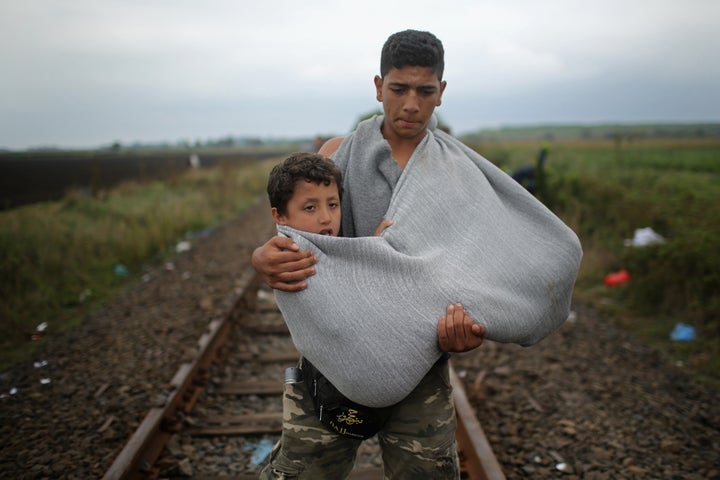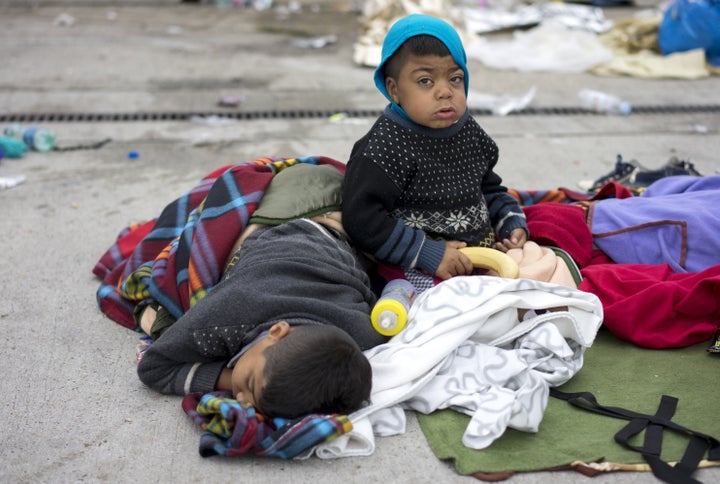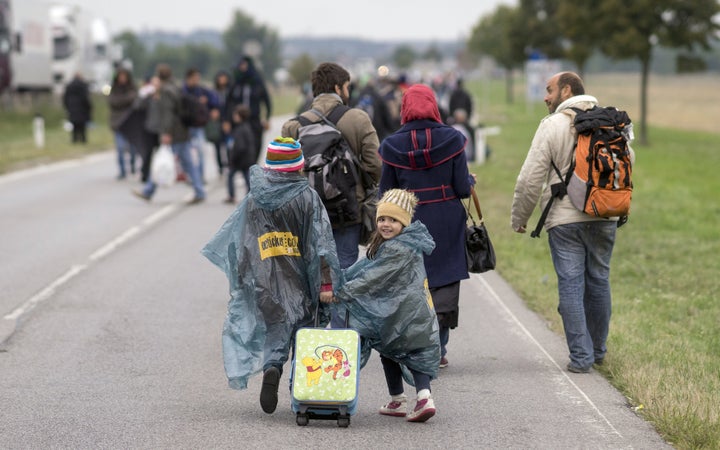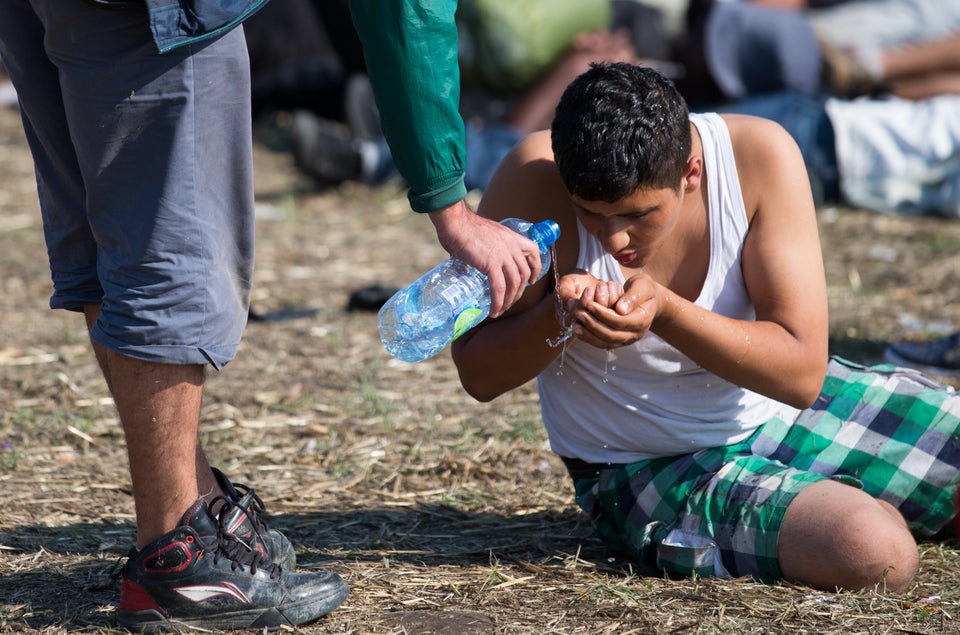
Thousands of people surged through European border crossings Friday, braving torrential rains, mud-slicked terrain and police forces as they continued their long walk seeking refuge in northern Europe.
Fleeing war, repression and extreme poverty, hundreds of thousands of refugees and migrants have streamed into Europe this year. Figures released Friday by the International Organization for Migration show that a record 433,000 refugees and migrants have crossed the Mediterranean to enter Europe since the beginning of the year -- more than twice the number who did so in all of 2014.
The majority of those who came this year first arrived on the shores of Greece, many of them after a harrowing boat crossing from Turkey. From there, they began an arduous journey north through Macedonia, Serbia and Hungary in the hopes of reaching more refugee-friendly and wealthy northern European countries. On each leg of the journey, the refugees have faced border closures and extreme hardships. Yet still they come.
"I'm not going to be afraid of anything," Waseem Absi, a 30-year-old Syrian man, told the Associated Press on Thursday as he trekked up a muddy slope near Greece's northern border with Macedonia. A record 7,000 people crossed the border out of crisis-stricken Greece on Thursday despite the lashing rain.
An Associated Press reporter described the scene:
Children stumbled into mud-filled potholes and had to be pulled back out, bawling, into their mothers' arms. People struggled to find anything -- plastic sheets, garbage bags, even a beach umbrella -- to shield themselves from an unrelenting deluge.
Conditions were similarly chaotic for those who made it through Macedonia and reached the Serbian border with Hungary. Some 3,000 people crossed into Hungary on Thursday. Humanitarian workers have warned that the lack of shelter and the cold, wet conditions along that route could lead to an outbreak of disease.
In an effort to lock down its border with Serbia, the Hungarian government is using prison labor to build a massive fence and is preparing to deploy thousands of troops to the area. In the meantime, people caught entering the country are being forced into overcrowded temporary detention centers for registration. On Thursday, volunteers posted a shocking video of police hurling food at a crowd of refugees in one of the centers.
Most refugees are trying to pass through Hungary as quickly as possible. But the country's tough response to migrants -- both those entering and those leaving -- has created a series of bottlenecks. Last week, Hungary lifted a ban on migrants trying to travel by train to Austria as thousands of people camped out at Budapest's Keleti station. But on Thursday, confusion reigned again. Hungarian police briefly blocked refugees and migrants from boarding trains to Austria, and some cross-border rail and bus services were suspended.
Amid the confusion and delays, thousands of people decided to keep going on foot, breaking through police lines on the Austrian border on Friday. Many started the 40-mile march along the highway to Vienna. Others collapsed in exhaustion, or decided to wait for buses and taxis north. A BBC correspondent described the scene in the Austrian border town of Nickelsdorf:
Existing shelters in the area are full and the army is putting up tents, the BBC's Bethany Bell reports. Exhausted men, women and children are everywhere, some even sleeping on the manicured gardens of Nickelsdorf's neat houses.


Meanwhile, European leaders remain deadlocked over how to distribute the massive flow of refugees among their countries.
While Austria and Germany have opened their borders to refugees, several European nations, including Romania, Hungary and Slovakia, have rejected a European Union plan to share 160,000 refugees among 23 of the member states. EU President Donald Tusk said on Friday that he will call an emergency summit if leaders can’t agree on how resolve the crisis.
Other European countries, like Britain and Denmark, already have loopholes that make them exempt from the scheme. Britain has volunteered to take in 20,000 Syrian refugees ― but only over the course of five years. Denmark’s integration minister announced on Friday that the country will not accept any of the 160,000 refugees in question, saying they have already “taken our share.”
CORRECTION: Due to an editing error, a previous version of this article mistakenly said that Hungary shares a border with Siberia. This likely came as a surprise to some readers. In fact, Hungary shares a border with Serbia.
Also on The WorldPost:

